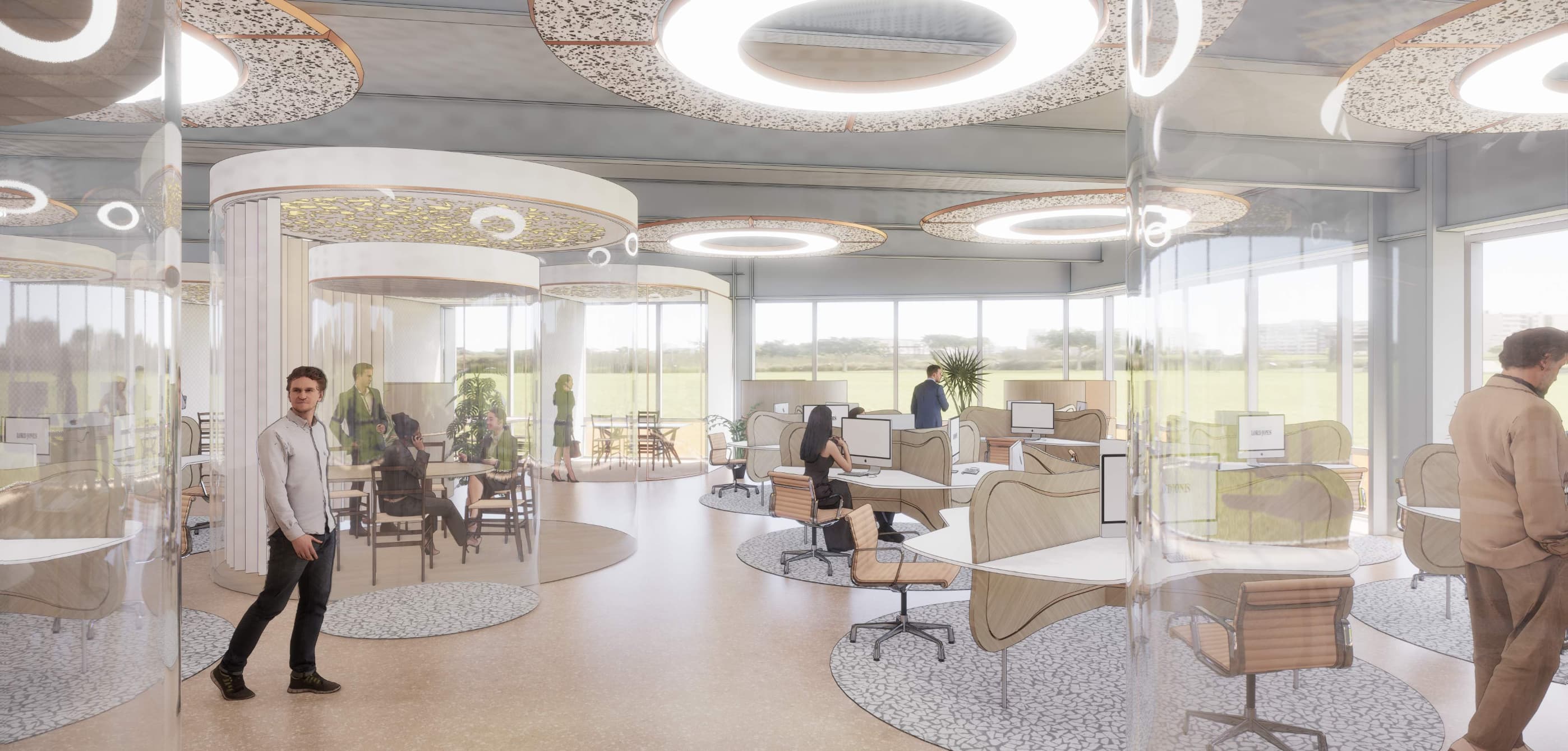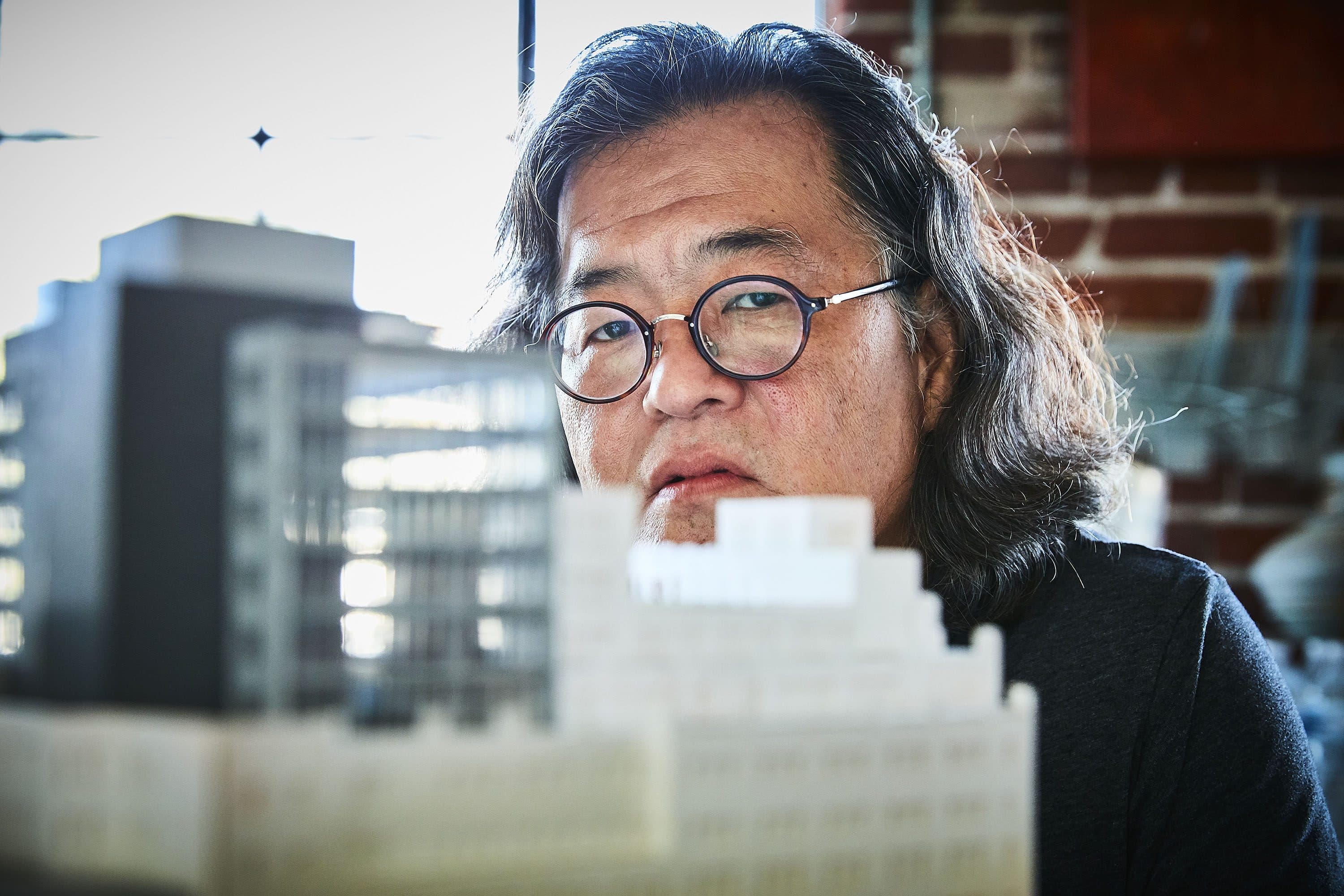I am old enough, and geeky enough, to know that the third episode of the Star Wars trilogy, the “Return of the Jedi'' was originally named the “Revenge of the Jedi.” It was changed right before the release because the fan culture pointed out that Jedi’s do not get revenge. This arrangement of words popped into my head while my studio was discussing / debating the “Return to the Workplace.” Undoubtedly, the tremendous emotional and physical strain that the world has experienced will exact its revenge on the workplace of the future.
No one has a clear picture of what we are going to do and how we are going to do it. Clearly, our attitudes about work have fundamentally changed and I would argue for the better. No need for a nostalgic return to the past, but an incredible opportunity to redefine the future of what it means to be a worker and what is the workplace. This is the first time in the history of our modern times that we can truly question everything. The future is wide open, who among us will blaze the new trail, how bold can we be? What is it going to look like, what will work, what will fail?
I want to share with you my big picture thoughts of the workplace and what influences will be the catalyst for changes in the future.
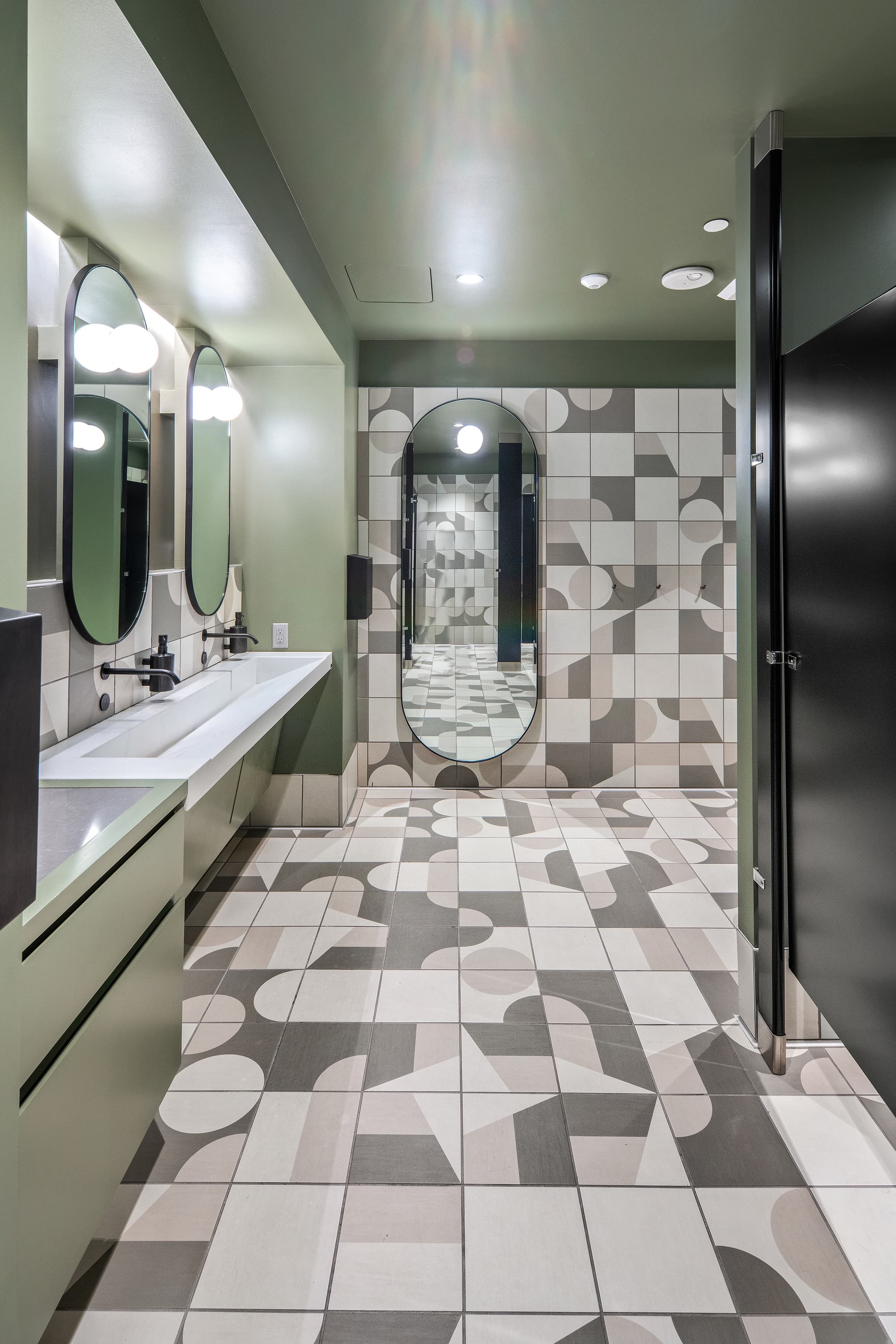
Shimoda Design Group, Swinerton - DTLA Office, Los Angeles
Health and Beauty
The immediate concerns of the pandemic will create a temporary culture of continued masking, social distancing and regular reminders to wash and wipe our surfaces. The workplace will be expected to address the extremes between a perception of clean and unclean. The actual population of the work space will vary wildly from company to company. There will be emergent patterns differentiating what, how and where you work. Many people will assume that the buildings themselves will improve, better air, better water and touchless amenities will be eminent. Monitoring systems will become more visible and more data will be collected to confirm a healthy environment. These types of ideas are expensive and will take time to implement, so it will be interesting to see what immediate demands people will make on the infrastructure of the workplace.
Our personal technology will become the tools that protect and monitor our health. Imagine a moment when your phone tells you not to sit in a chair that is dirty. Will your smartwatch give a gentle pulse when it detects a virus? Will sports companies like Nike and Adidas become biotech companies that make smart clothing that protect us when it senses threat? Will Supreme introduce the first bubble suit that we all want to wear? Will the beauty industry create hip and stylish wearable countermeasures to protect us in a world full of germs? I certainly hope so, sooner rather than later please.
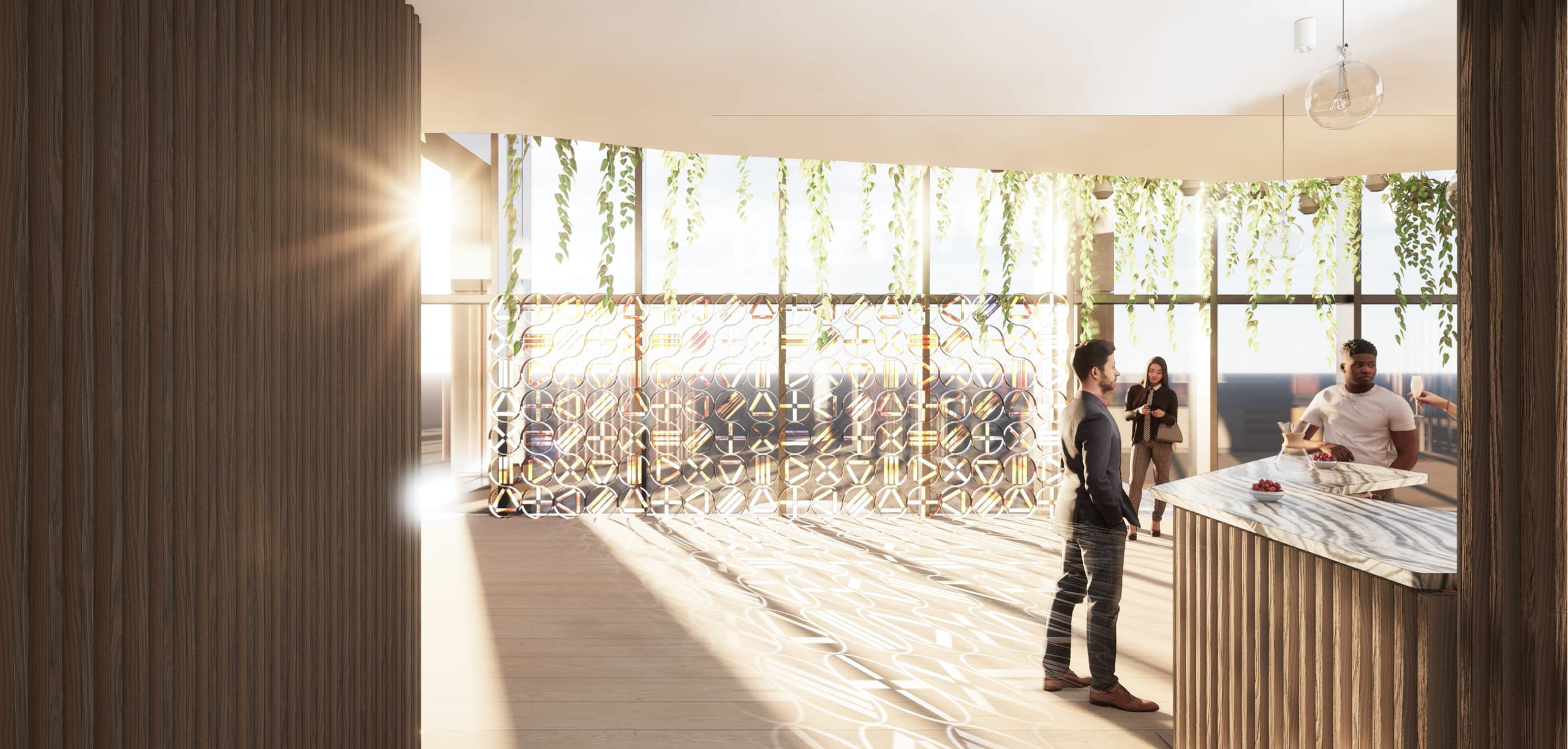
Shimoda Design Group, Light Prism, Steelcase, DTLA, Los Angeles
How smart is my building?
Buckminster Fuller asked the question, “how much does your house weigh.” In 50 years, the pandemic will be known as the spark that changed our understanding and expectation of how efficient our buildings and interior environments are. The definition of design success will be based on measurable performance parameters that will define what is good and what is bad. Imagine a “yelp” style rating where you can find out how pure the air or water is or how effective the ventilation system is in a particular space. Centered around health, the quality of air, light, water will become much improved and each new structure will be an autonomous net zero entity. We can count on a future where better systems create a better environment. The return to the workplace 2021 will start the conversation of how buildings and interiors can be good for us. At the beginning we will over design things and it will take time to find the optimal amount of design. Design thinking and design science will be at the forefront of how to create a better built future. Design solutions need to go through being stupid before they get to smart, but they won’t get there at all unless we start the process.
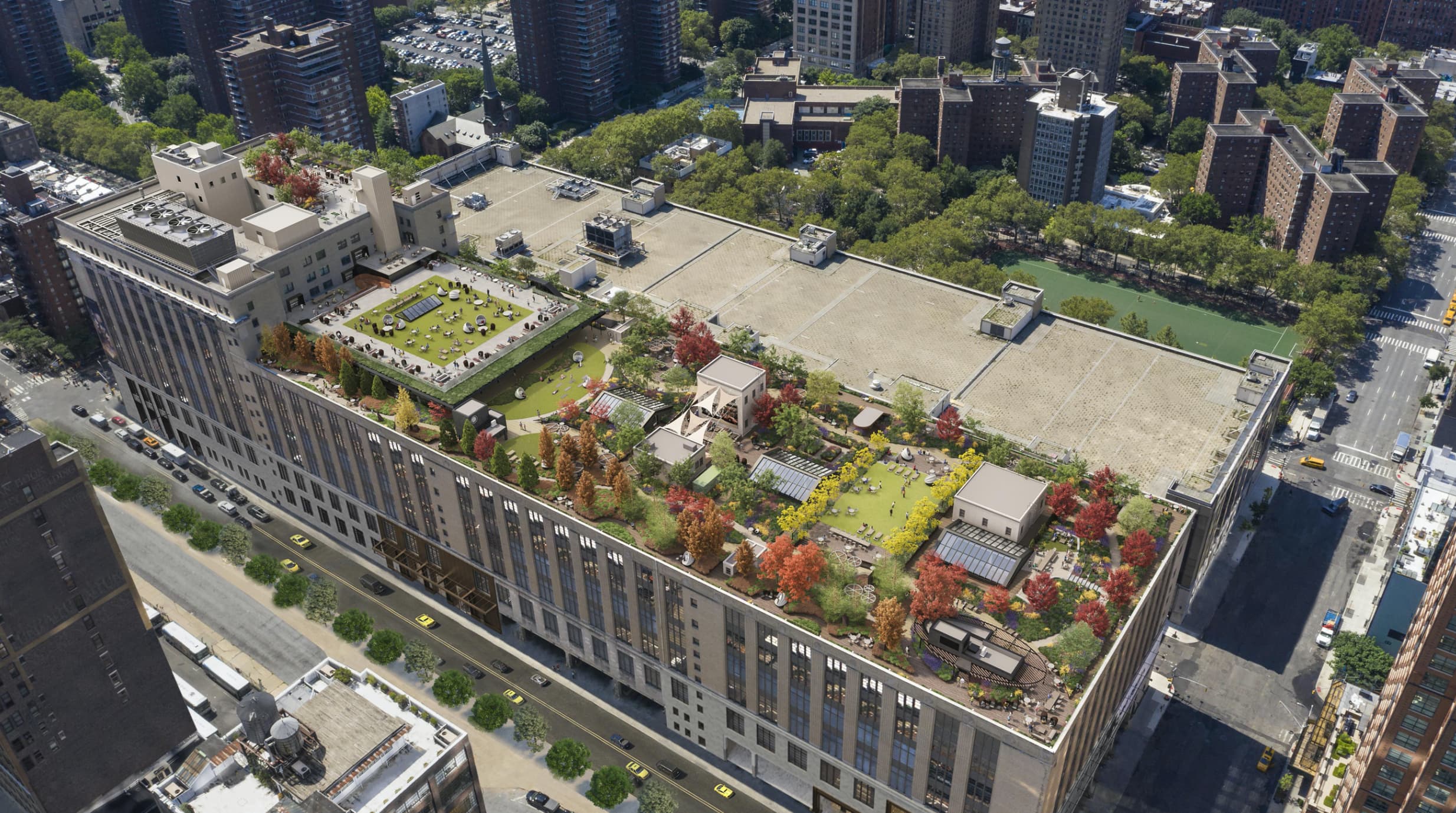
Shimoda Design Group, Morgan North Addition and Roof Garden, 10th Ave and 30th Street, Hudson Yards, New York
The importance of nature
The single biggest desire in the workplace will be… not being in the workplace. We will expect that work from home will become a permanent part of our culture. The third place will shift to the outdoors. The need to have a connection to nature will become one of the most desired amenities in a work day. If this pandemic has shown us one thing, it is that we should not stay inside all the time in front of a screen and virtually connect with one another. Nature will become the “go-to” venue for creativity and collaboration. When we realize a world of electric cars and clean buildings, the menace of pollution will diminish and we can safely spend more time outside. In the meantime, designers need to continue to find ways to bring the outdoors in. Improve connections to natural light, promote biophilia and access to the outdoors.
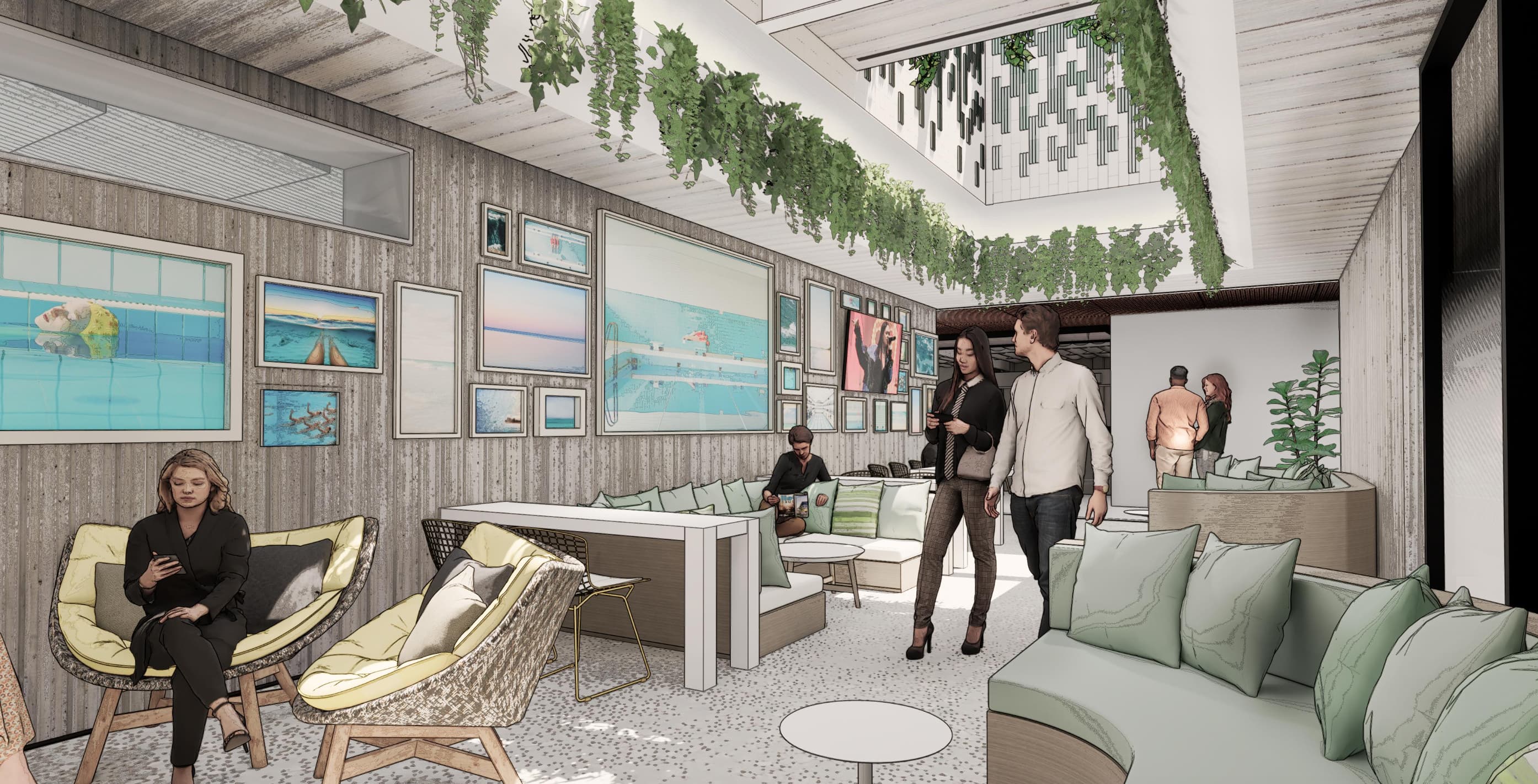
Shimoda Design Group, Recording Studios, Artist District, Los Angeles
Culture and Community
Perhaps the biggest thing that the pandemic did was eliminate the ability for people to gather and create community. I am hopeful that when we start to gather, we will be wiser and more appreciative of the gifts we get from being around other people. Working alone isolates us from observing the energy that is created when there is a varied mix of age, gender and ethnicity. Creativity is always boosted by serendipity. Increased social collisions only happen when people interact with each other. We all experienced a great degree of isolation during this time in lock down. How could young people who are new to work possibly understand what makes an energetic magical workplace, when they can’t feel any energy? The task of design is to find ways to help that energy flow. We need to design spaces that will create an overwhelming magnetic attraction. Who among us will move first into the unknown to develop a fresh outlook on a familiar idea?
The return to the workplace will be one of the most interesting design problems we will have in this lifetime. The perceptions of how we interact with each other are changed. As designers of the environment, we have a great task ahead of us when we return to work. After a year of living deep in the dark side, we need to utilize our collective and optimistic powers of design to create a safe and healthy place where culture and community can thrive. I will end with one last quote from Buckminster Fuller:
“When I am working on a problem, I never think about beauty but when I have finished, if the solution is not beautiful, I know it is wrong.”
So, good luck kids, I will be at the bar to answer questions and discuss the possibilities.
See you there, in-person, I hope.
Cheers
Joey Shimoda, FIIDA FAIA
Shimoda Design Group
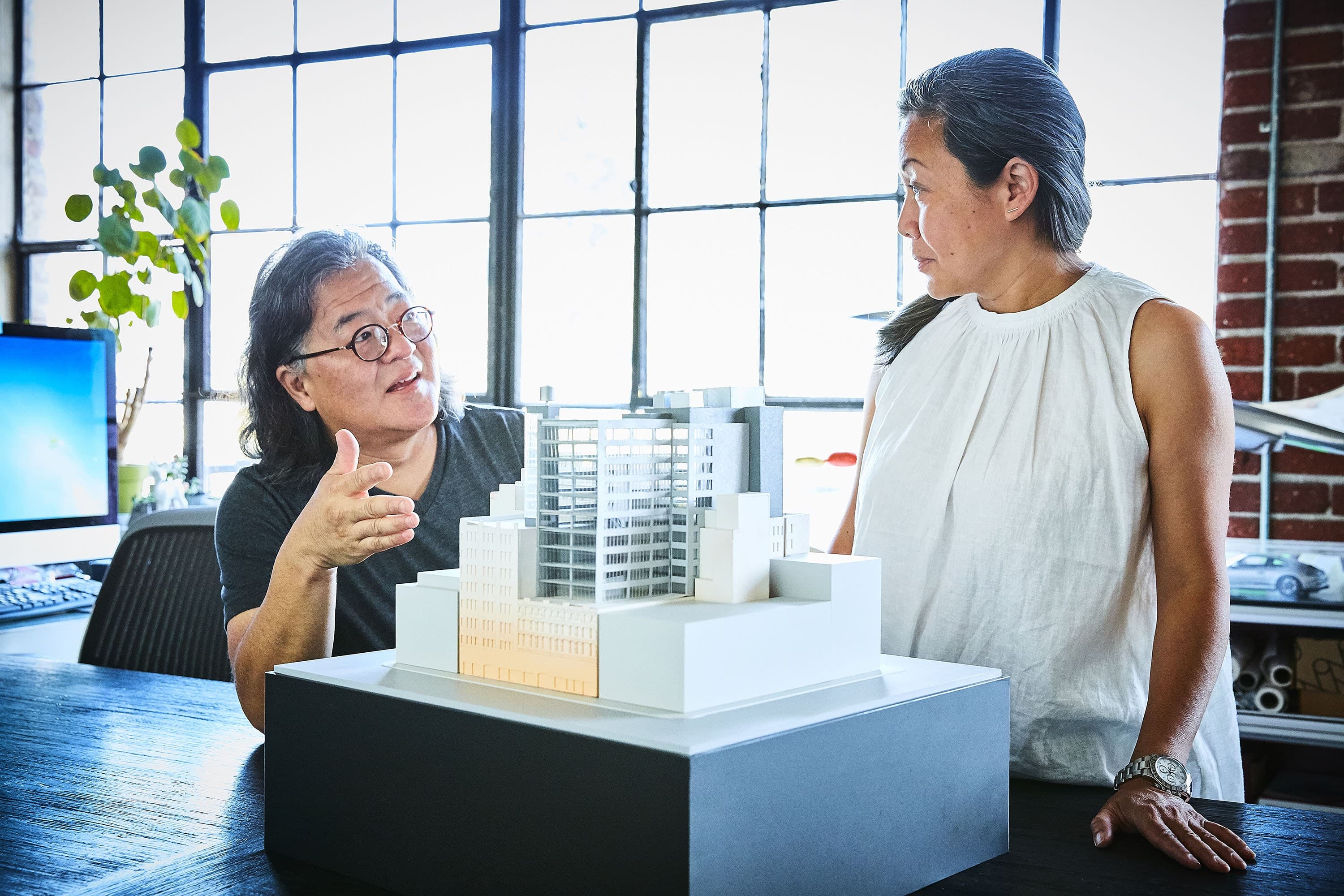
Joey Shimoda, FAIA, FIIDA, and Susan Chang, AIA, co-founders of Shimoda Design Group
Image #1: Shimoda Design Group, Beauty Company, Los Angeles
